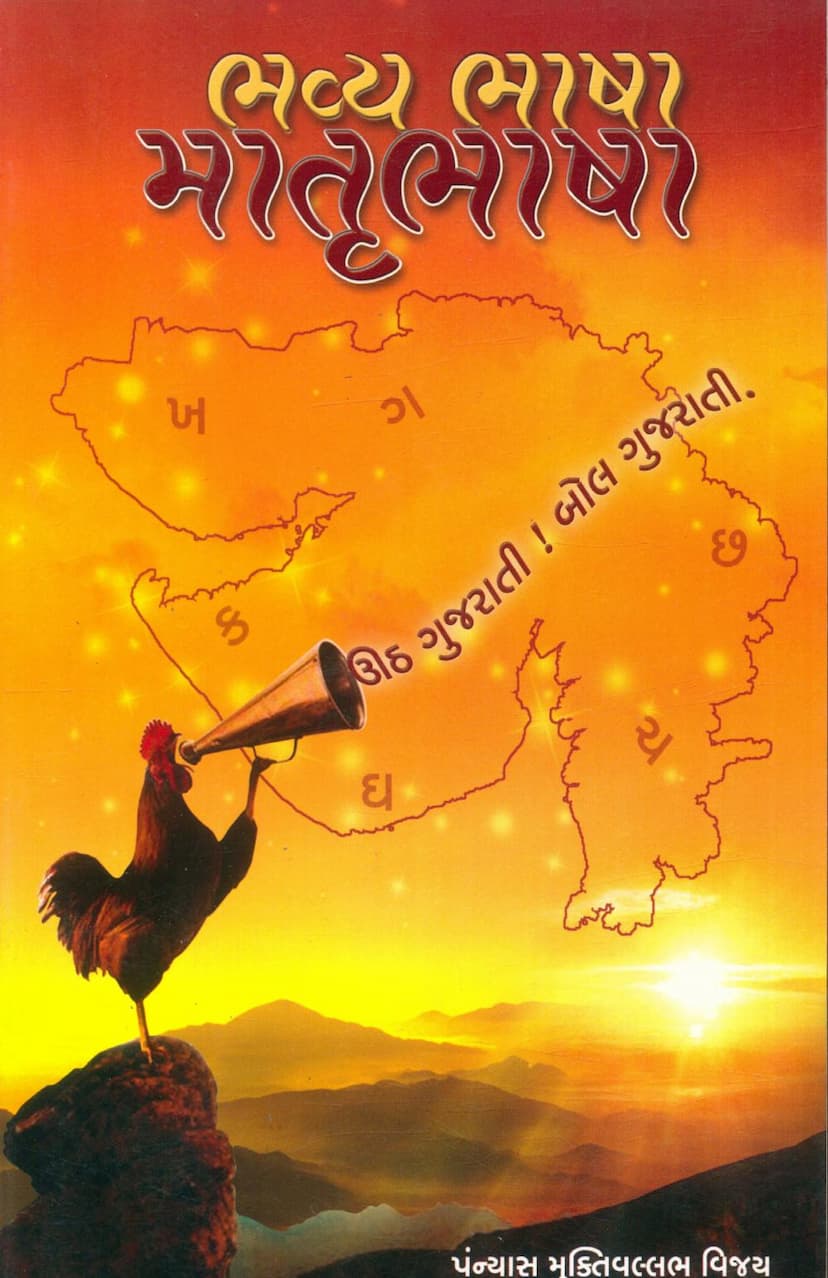Bhavya Bhasha Matrubhasha
Added to library: September 1, 2025

Summary
Here's a comprehensive summary of the Jain text "Bhavya Bhasha Matrubhasha" by Muktivallabhvijay, based on the provided pages:
Overall Theme:
The book is a passionate and critical examination of the decline of the Gujarati language and culture due to the overwhelming influence and adoption of English. The author, Muni Muktivallabhvijay, expresses deep concern and sorrow over this trend, viewing it as a threat not just to the language but to the very essence of Gujarati identity, culture, and religious heritage.
Key Arguments and Concerns:
-
The Superiority of Mother Tongue: The book strongly advocates for the mother tongue, Gujarati, as the ideal medium for education and cultural preservation. It argues that the mother tongue is intrinsically linked to a child's cognitive development, emotional well-being, and cultural grounding. The author uses the analogy of a child's natural bond with its mother's milk to highlight the irreplaceable nature of the mother tongue.
-
The "English Fever": The author laments the widespread "fever" or obsession with English among Gujaratis, leading to the neglect of their own rich language and heritage. This is illustrated through numerous examples of Gujarati words, customs, and concepts being replaced by their English counterparts, often resulting in awkward, inaccurate, or humorous linguistic hybrids ("Gujlish").
-
Linguistic and Cultural Erosion: The book meticulously details how English has infiltrated everyday Gujarati life, from home interiors and daily routines to education, business, and even emotional expressions. The author provides extensive lists of English words and phrases that have replaced Gujarati equivalents, arguing that this linguistic dilution leads to a broader cultural erosion, a loss of traditional values, and a disconnect from Gujarati identity.
-
Education as a Critical Battlefield: A significant portion of the book focuses on the negative impact of English-medium education. The author argues that this medium hinders a child's natural learning process, creates a disconnect between home and school environments, leads to a deficiency in both Gujarati and English proficiency, and ultimately alienates children from their cultural roots and religious heritage. The author cites examples of successful individuals who thrived in Gujarati-medium education and contrasts them with the struggles of children in English-medium schools.
-
The Loss of Unique Gujarati Concepts: The book highlights numerous Gujarati words and concepts that have no direct English equivalent, such as "paniyarun" (a sacred water-pot corner in a house), "indhoni" (a head-pad for carrying water pots), "kankavati" (auspicious red powder container), "dantarn" (a traditional toothbrush), and various culinary terms like "rotli," "lapshi," and "puranpoli." The absence of direct translations signifies a loss of the cultural context and nuances associated with these words.
-
Critique of Western Influence: The author criticizes the uncritical adoption of Western culture and lifestyle, which often accompanies the embrace of English. This includes changes in food habits, clothing, social interactions, and even emotional expression, which are seen as detrimental to Gujarati values and traditions.
-
The Call to Action: The book is not just a lament but also a strong call to action. The author urges Gujaratis to:
- Prioritize Gujarati as the medium of education, especially at the primary level.
- Actively use and promote Gujarati in daily life.
- Preserve and celebrate Gujarati literature, traditions, and cultural practices.
- Resist the uncritical adoption of English and Western influences.
- Parents are encouraged to ensure their children have a strong foundation in Gujarati, even if they pursue higher education in English.
-
Sorrow and Anguish: Throughout the book, the author conveys a deep sense of sorrow, pain, and anguish over the perceived decline of Gujarati. The concluding chapters are particularly poignant, with the author expressing a feeling of helplessness against the tide of Anglicization, comparing it to watching a mother die at the hands of her own children.
Structure and Style:
The book is structured thematically, with each chapter exploring a different facet of the language and cultural decline. The author employs a direct, persuasive, and sometimes emotional style, using anecdotes, comparisons, statistics (though not extensively detailed in the provided pages), and rhetorical questions to drive home his points. The extensive lists of English words replacing Gujarati ones serve as a powerful and often startling illustration of the problem.
Overall Message:
"Bhavya Bhasha Matrubhasha" is a heartfelt plea for the revival and preservation of the Gujarati language and culture. It serves as a warning against the dangers of linguistic and cultural assimilation, urging readers to reconnect with their mother tongue and heritage before it is irrevocably lost. The book emphasizes that language is not merely a tool for communication but a vital repository of culture, values, and identity.